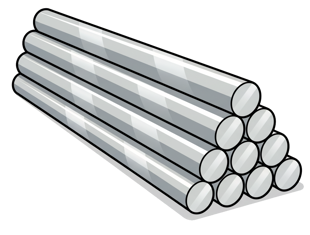Resources
Glossary
Superalloy
A superalloy is a high-performance metallic alloy engineered to maintain exceptional strength, toughness, and stability at high temperatures—often above 1000°C (1832°F)—while resisting creep, corrosion, and oxidation. These materials are specifically designed for environments where conventional metals like steel or aluminum would quickly weaken, deform, or oxidize.

Superalloys are typically based on three primary metals: nickel, cobalt, or iron (or combinations of them). Of these, nickel-based superalloys are the most widely used because of their outstanding performance under both mechanical and thermal stress. The alloys achieve their remarkable properties through a combination of precise chemical composition and complex microstructural strengthening mechanisms.
Their key alloying elements include:
- Chromium (Cr) – enhances oxidation and corrosion resistance.
- Cobalt (Co) – stabilizes the microstructure and improves strength at high temperatures.
- Molybdenum (Mo), tungsten (W), and tantalum (Ta) – increase creep resistance.
- Aluminum (Al) and titanium (Ti) – form strengthening precipitates known as γ′ (gamma-prime) phases in nickel-based alloys, which give superalloys their superior heat strength.
- Niobium (Nb) – further improves strength and stability in alloys such as Inconel 718.
Superalloys are produced through advanced metallurgical techniques like vacuum induction melting (VIM), vacuum arc remelting (VAR), and powder metallurgy, which ensure purity and precise control over grain structure. Some are precipitation-hardened, meaning they gain strength from fine, stable particles distributed throughout the metal that block dislocation movement at high temperatures.
These alloys are critical in industries where materials must withstand extreme thermal, chemical, and mechanical conditions. They are used in jet and rocket engines, gas turbines, nuclear reactors, chemical processing plants, and marine and oil drilling equipment. For example, turbine blades in jet engines—arguably one of the most demanding engineering components—are often made of single-crystal nickel-based superalloys to eliminate grain boundaries and prevent creep.
